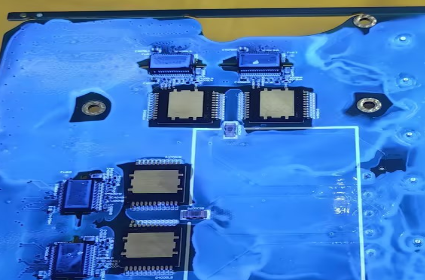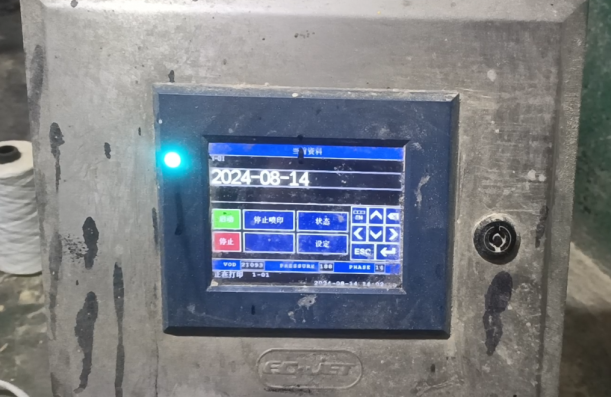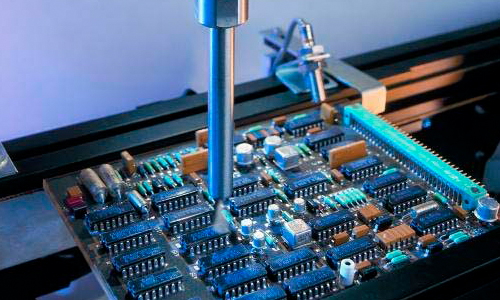In today’s world, electronics are everywhere, from industrial machinery to consumer gadgets. But when these devices face harsh environments—think extreme temperatures, moisture, dust, or chemical exposure—unprotected circuit boards can fail. That’s where conformal coating for SMD PCBs (Surface Mount Device Printed Circuit Boards) comes in. This protective layer shields your electronics, ensuring they perform reliably no matter the conditions. In this blog, we’ll dive deep into how conformal coating works, why it’s essential for SMD PCBs, and how it offers robust electronics protection in harsh environments.
What Is Conformal Coating and Why Does It Matter for SMD PCBs?
Conformal coating is a thin, protective layer applied to printed circuit boards (PCBs) to safeguard them from environmental hazards. It “conforms” to the shape of the board and its components, creating a barrier against moisture, dust, chemicals, and temperature extremes. For SMD PCBs, which are packed with tiny, densely placed components, this protection is critical. These boards are often used in compact, high-performance devices, making them more vulnerable to damage from external factors.
Without proper PCB protection, SMD components can corrode, short-circuit, or suffer from reduced performance due to environmental stress. Conformal coating acts as a shield, extending the lifespan of your electronics and ensuring they function as intended, even in the toughest conditions.

The Challenges of Harsh Environments for SMD PCBs
Harsh environments pose unique challenges to electronics, especially for SMD PCBs with their small, intricate designs. Let’s break down some of the most common threats:
- Moisture and Humidity: Water can seep into tiny gaps between components, causing corrosion or short circuits. High humidity levels can also lead to condensation, which affects performance over time.
- Extreme Temperatures: Both high and low temperatures can stress components, leading to thermal expansion or contraction. For instance, temperatures above 85°C can degrade solder joints on SMD PCBs, while sub-zero conditions can make materials brittle.
- Dust and Contaminants: Fine particles can settle on boards, interfering with electrical connections. In industrial settings, airborne pollutants like sulfur or salt can corrode exposed metal surfaces.
- Chemical Exposure: Harsh chemicals, such as solvents or acids, can erode components or degrade the board’s substrate, leading to failures.
- Vibration and Mechanical Stress: In automotive or aerospace applications, constant vibration can loosen connections or crack components if not properly protected.
Conformal coating addresses these issues by creating a durable barrier that prevents direct exposure to these damaging elements, ensuring long-term electronics protection.
Types of Conformal Coatings for SMD PCBs
Not all conformal coatings are the same. Different materials offer varying levels of protection, depending on the environment and application. Below are the most common types used for SMD PCBs in harsh environments:
1. Acrylic Coatings
Acrylic coatings are popular due to their ease of application and removal. They provide good moisture resistance and are suitable for moderate environments. However, they may not hold up well under extreme temperatures or heavy chemical exposure.
2. Silicone Coatings
Silicone coatings excel in high-temperature environments, often withstanding ranges from -40°C to 200°C. They are flexible, which helps absorb vibrations, making them ideal for automotive and aerospace applications. Their downside is that they can be harder to rework or remove.
3. Polyurethane Coatings
Polyurethane offers excellent chemical resistance and durability, making it a go-to choice for industrial settings with exposure to solvents or acids. It also provides decent moisture protection but may be less flexible than silicone.
4. Epoxy Coatings
Epoxy coatings are incredibly tough and provide strong protection against abrasion and chemicals. However, they are rigid, which can be a drawback in applications with frequent vibration or thermal cycling.
5. Parylene Coatings
Parylene is a premium option applied through a vapor deposition process, resulting in a uniform, pinhole-free layer. It offers superior protection against moisture and chemicals and is often used in medical or military applications. Its main limitation is the high cost and complex application process.
Choosing the right coating depends on the specific harsh environment your SMD PCB will face. For instance, a board in a marine setting might benefit from parylene for maximum moisture resistance, while a factory setting might call for polyurethane to combat chemical exposure.
How Conformal Coating Enhances Electronics Protection
Conformal coating does more than just cover a PCB; it actively enhances reliability and performance in several ways:
- Increased Dielectric Resistance: The coating insulates components, preventing electrical shorts even in high-humidity conditions. This is especially important for SMD PCBs, where components are placed very close together, sometimes with spacing as tight as 0.5 mm.
- Thermal Stability: Many coatings can handle wide temperature swings, protecting components from thermal shock. For example, silicone coatings maintain integrity even when temperatures fluctuate by 100°C or more.
- Corrosion Prevention: By blocking moisture and contaminants, coatings stop oxidation of metal contacts, which can otherwise increase resistance and degrade signal quality.
- Vibration Dampening: Flexible coatings like silicone absorb mechanical stress, reducing the risk of cracked solder joints or component failure in high-vibration settings.
- Contamination Barrier: Dust, dirt, and fungal growth can’t penetrate the coating, keeping the board clean and operational.
These benefits translate to fewer failures, lower maintenance costs, and longer-lasting electronics, making conformal coating a must for any SMD PCB exposed to harsh environments.
Application Methods for Conformal Coating on SMD PCBs
Applying conformal coating to SMD PCBs requires precision to ensure even coverage without damaging delicate components. Here are the primary methods used:
1. Brush Application
This manual method involves using a brush to apply the coating. It’s cost-effective for small batches or prototypes but can result in uneven layers and is not ideal for large-scale production.
2. Spray Application
Spraying, either by hand or with automated systems, is faster and provides more consistent coverage. It works well for most SMD PCBs but may require masking to protect areas like connectors that shouldn’t be coated.
3. Dip Coating
In this method, the PCB is dipped into a liquid coating material. It ensures complete coverage, even in hard-to-reach areas, but can be messy and often requires masking as well.
4. Selective Coating
Automated machines apply coating only to specific areas of the PCB, avoiding sensitive components like switches or sensors. This method is highly precise and efficient for complex SMD designs.
5. Vapor Deposition (for Parylene)
Used specifically for parylene, this process deposits the coating as a gas that solidifies into a thin, uniform layer. It’s perfect for intricate SMD layouts but requires specialized equipment.
The choice of method depends on the production volume, board complexity, and budget. For high-reliability applications, selective coating or vapor deposition often delivers the best results for electronics protection.

Key Considerations When Choosing Conformal Coating for SMD PCBs
Selecting the right conformal coating for your SMD PCB involves balancing several factors to ensure optimal PCB protection in harsh environments. Here are some key points to keep in mind:
- Environmental Conditions: Match the coating to the specific threats your board will face. For high humidity, prioritize moisture resistance; for industrial settings, focus on chemical resistance.
- Temperature Range: Ensure the coating can handle the operating temperature of your device. For example, if your SMD PCB operates between -20°C and 150°C, silicone might be the best choice.
- Flexibility Needs: If your application involves vibration or mechanical stress, opt for a flexible coating to prevent cracking.
- Reworkability: Some coatings, like acrylic, are easier to remove for repairs, while others, like epoxy, are more permanent.
- Cost and Scalability: High-end options like parylene offer unmatched protection but may not be cost-effective for large-scale production.
By carefully evaluating these factors, you can choose a coating that provides the best balance of protection, performance, and cost for your specific needs.
Real-World Applications of Conformal Coating for SMD PCBs
Conformal coating plays a vital role in many industries where electronics must withstand harsh environments. Here are a few examples:
- Automotive Electronics: SMD PCBs in vehicles face temperature swings, vibration, and exposure to road salt. Coatings ensure reliable performance of systems like engine control units and sensors.
- Aerospace and Defense: Electronics in aircraft and military equipment endure extreme conditions, from high altitudes to corrosive environments. Conformal coatings protect critical systems against failure.
- Medical Devices: Devices like pacemakers or diagnostic equipment often require biocompatible coatings like parylene to resist bodily fluids and ensure patient safety.
- Industrial Equipment: Machinery in factories is exposed to dust, chemicals, and humidity. Coatings extend the life of control boards and sensors in these tough settings.
- Consumer Electronics: Outdoor gadgets, such as GPS devices or action cameras, benefit from coatings that guard against rain, dirt, and temperature changes.
These examples highlight the versatility of conformal coatings in providing electronics protection across diverse applications.
Best Practices for Applying Conformal Coating to SMD PCBs
To maximize the effectiveness of conformal coating for PCB protection, follow these best practices during application:
- Clean the PCB Thoroughly: Remove all contaminants like flux residues or dust before coating. Even small particles can trap moisture and cause failures.
- Mask Sensitive Areas: Use masking materials to cover connectors, switches, or other components that must remain uncoated for functionality.
- Apply Even Layers: Ensure uniform thickness (typically 25-75 micrometers for most coatings) to avoid weak spots or excessive buildup that could stress components.
- Cure Properly: Follow manufacturer guidelines for curing time and temperature to achieve optimal adhesion and protection. For example, some coatings require 24 hours at room temperature or a few hours at 60°C.
- Inspect for Defects: After application, check for bubbles, pinholes, or uneven areas that could compromise protection.
Adhering to these steps ensures that the coating provides reliable protection against harsh environments without introducing new issues.
Conclusion: Safeguard Your SMD PCBs with Conformal Coating
In harsh environments, unprotected SMD PCBs are at risk of failure due to moisture, temperature extremes, chemicals, and more. Conformal coating offers a proven solution for electronics protection, extending the life and reliability of your devices. By choosing the right type of coating and application method, you can ensure robust PCB protection tailored to your specific needs.
Whether you’re designing electronics for automotive, industrial, or consumer applications, investing in conformal coating is a smart way to safeguard your SMD PCBs. It’s a small step that delivers big results, keeping your electronics running smoothly no matter the challenges they face.

 ALLPCB
ALLPCB







